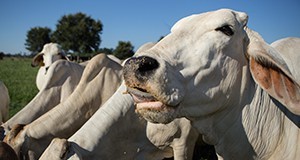Abstract
A well-run, profitable business is usually more efficient than its competitors. In the case of the beef cattle industry, competition can come from two sources: other producers who sell similar classes of cattle, and other protein-producing species, such as pork and poultry. Measuring efficiency across the entire integrated beef system can be difficult due to the differing classes of cattle, breed differences, and ways in which the biological systems interact. There are a multitude of measures of efficiency in beef production, with feed efficiency being one of the most economic. This 3-page fact sheet is a major revision that covers feed to gain ratio and residual feed intake in beef cattle. Written by Travis D. Maddock, Darren D. Henry, and G. Cliff Lamb, and published by the UF Department of Animal Sciences. Original publication date: May 2009. Revised: October 2015.
References
Archer, J. A., A. Reverter, R. M. Herd, D. J. Johnston, and P. F. Arthur. 2002. "Genetic variation in feed intake and efficiency of mature beef cows and relationships with postweaning measurements." 7 World Cong. Genet. Appl. Livest. Prod., Montpellier, France Comm. 10-7.
Arthur, P. F., J. A. Archer, R. M. Herd, and G. J. Melville. 2001. "Response to selection for net feed intake in beef cattle." Assoc. Advmt. Anim. Breed. Genet. 14: 135-138.
Crews, D. H., Jr. 2005. "Genetics of efficient feed utilization and national cattle evaluation: A review." Genet. Mol. Res. 4: 152-165.
Herd, R. M., and S. C. Bishop. 2000. "Genetic variation in residual feed intake and its association with other production traits in British Hereford cattle." Livest. Prod. Sci. 63: 111-119. https://doi.org/10.1016/S0301-6226(99)00122-0

